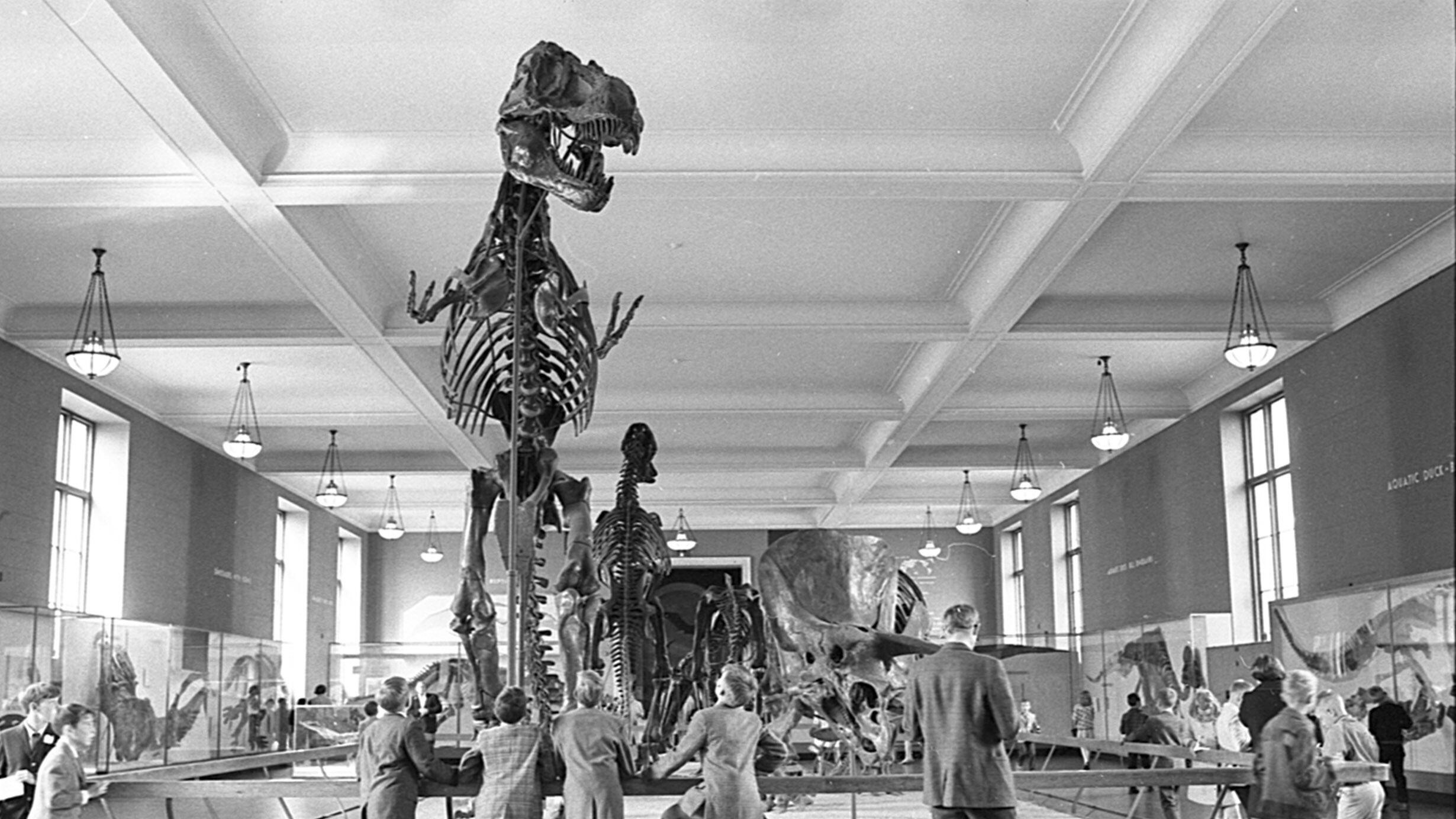 Paleontologists originally thought that T. rex had three claws, but later determined that it only had two.
Paleontologists originally thought that T. rex had three claws, but later determined that it only had two.© AMNH
When the first-ever full Tyrannosaurus rex fossil skeleton was put on display in the Museum in December 1915, its tiny forelimbs were topped by three claws.
This nearly-complete skeleton—specimen AMNH 5027, which is on view in the Museum’s Hall of Saurischian Dinosaurs today—became an icon, and the main model for the Mesozoic mega-predator in scientific literature and popular culture alike. Look closely at the T. rex in Walt Disney’s 1940 Fantasia, for example, and you’ll see that the animated animal sports a three-fingered hand.
Find out why Barnum Brown is known as the greatest dinosaur collector of all time.
There was only one wrinkle. AMNH 5027, like most fossil finds, was incomplete. It had more fossil material than an earlier T. rex specimen, which was discovered by Museum fossil hunter Barnum Brown in Wyoming in 1905 and exhibited in the Museum’s Hall of Dinosaurs without head or tail in 1906. AMNH 5027, which Brown uncovered in Big Dry Creek, Montana, in 1908, and described as having a “perfect” skull, had enough bones to mount a more permanent display.
D. Finnin/©AMNH
Still, AMNH 5027 had gaps. Notably, there were no fossils recovered of forelimbs or feet. As they worked on the first-ever mount of T. rex, Brown and Museum preparator Adam Hermann looked to another large North American theropod, Allosaurus, which notably has three claws.
Learn more about the Museum’s iconic Tyrannosaurus rex fossil skeleton, AMNH 5027.
While preparators in New York were working on the first-ever mounted skeleton of T. rex, Canadian paleontologist Lawrence Lambe published a paper about the near-complete skeleton of an earlier, smaller tyrannosaur species, Gorgosaurus. This species, Lambe reported, had only two fingers. What’s more, according to Lambe’s analysis, the structure of its hand could not support a third digit at all.
Since the arms of Gorgosaurus were unusually small and disproportionate to its body, like those of T. rex, paleontologists began to suspect that the two species may have had more anatomical features in common. By the 1920s, the Museum had updated its T. rex to feature only two claws. But without fossil evidence, T. rex remained, in the public imagination, a three-clawed animal.
D. Finnin/©AMNH
It wasn’t until 1988 that a T. rex specimen was discovered with intact arms, confirming that the predator did in fact, have only two claws. Amateur fossil hunter Kathy Wankel uncovered the arms while boating on the Fort Peck reservoir in Montana, not far from where Brown had discovered the first T. rex specimen in 1902. She brought the bones to the Museum of the Rockies for identification, stunning researchers with the unprecedented find. When the full skeleton was unearthed, it was 85 percent complete, making it one of the most complete T. rex specimens ever found.
The Museum’s T. rex is now updated to only feature two claws on each hand. And while it took more than 80 years for scientists to find the fossil evidence needed to solve this mystery, the story of how T. rex “lost” its claws is an example of how each new discovery can change scientific understanding—and how even the best-studied of dinosaurs can still surprise us.
Visit the special exhibition T. rex: The Ultimate Predator to see the original three-fingered models used for T. rex.